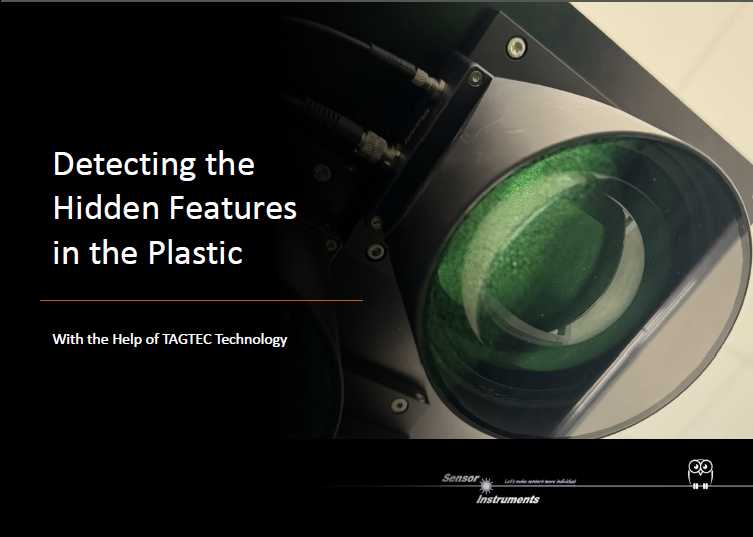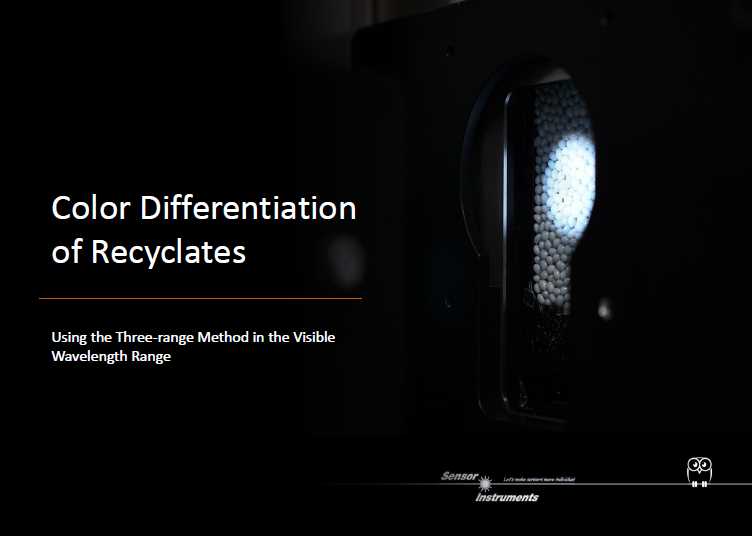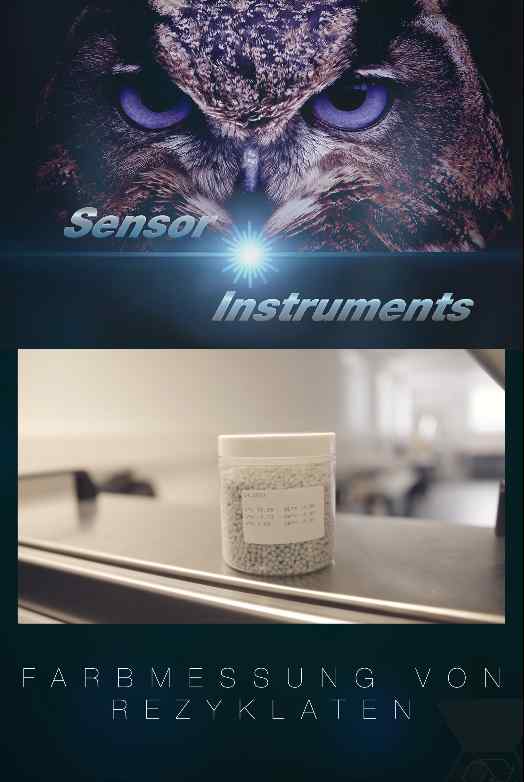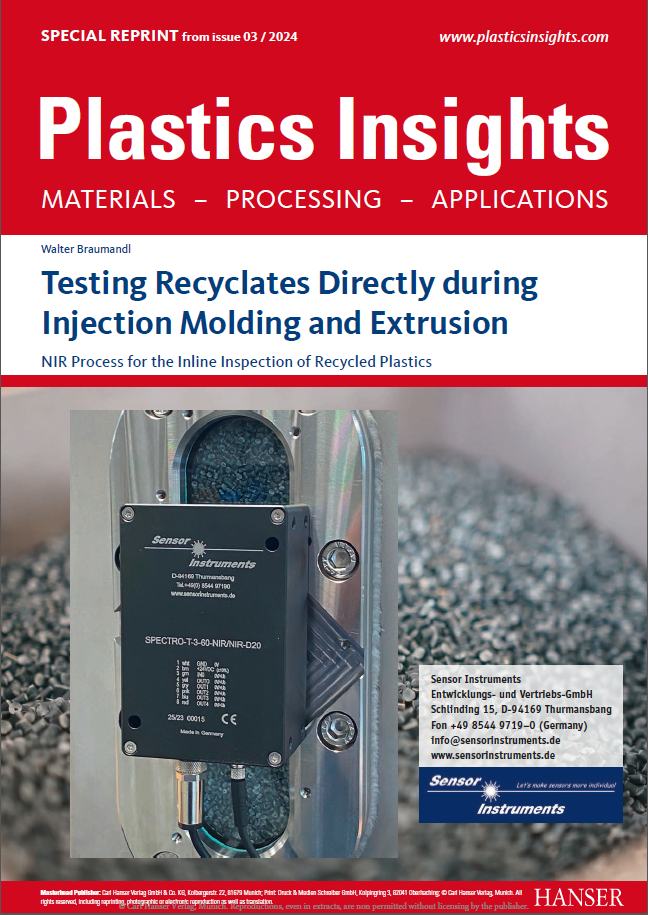Sensores para la franja del infrarrojo cercano (NIR) y del medio (MIR)
26.08.2024
26.08.2024
20.06.2024
| The use of more and more recyclates in the plastic processing industry, driven not least by the EU Packaging and Packaging Waste Regulation (PPWR) with regard to the proportion of recyclates in plastics, also increases the need to carry out a check according to the type of plastic of the respective recyclate in addition to the color check already carried out in the laboratory. There is no lack of adequate sensor technology during the sorting and separating process, as various machine builders offer sorting systems equipped with so-called hyperspectral cameras suitable for the NIR range. These are suitable for sorting whole objects as well as for separating plastic fragments and flakes. However, for economic reasons these NIR cameras are less suitable for more selective product monitoring. Discrete sensors and sensor systems, which are both very compact in design and inexpensive to purchase, are more appropriate for this purpose.
In addition to stationary laboratory devices SPECTRO-T-3-0°/45°-LAB-LF and SPECTRO-T-3-DIF/0°-LAB-LF, mobile laboratory systems SPECTRO-T-3-0°/45°-MOBILE-P and SPECTRO-T-3-DIF/0°-MOBILE-P are also available. To avoid sending the measuring systems in for regular recalibration, on-site calibration has been integrated into the devices. (...) |
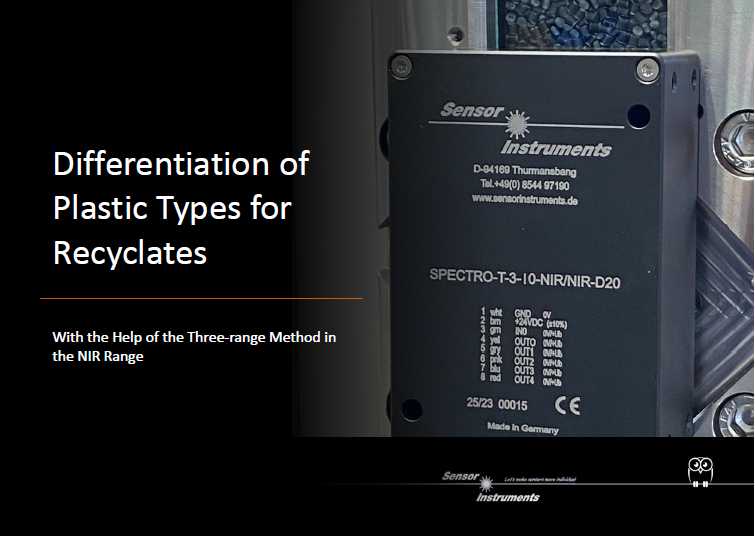 Differentiation of Plastic Types for Recyclates With the help of the Three-range Methode in the NIR Range |
26.08.2024
| Soot-blackened plastic, like a black hole that devours all light? Not quite! Although a large proportion of the light hitting the black plastic material is absorbed in the visible and near infrared range (NIR), the absorption behavior of Carbon Black products in the mid infrared range (MIR) is rather low compared to light-colored materials. In the MIR range, therefore, a window opens that provides an insight into the type of plastic used. Different Carbon Black plastics have a characteristic spectral absorption behavior in the MIR range, which makes it possible to differentiate between different types of plastic in this wavelength range.
Up to now, black plastic has tended to be downcycled, at least in open cycles, i.e. the recycled material is no longer intended for its original use but is instead used for lesser purposes. In view of the fact that around 1/6 of the plastic material produced each year currently consists of carbon black, there is an increasing need for action to return the recycled material to its original area of application. In the automotive industry in particular, but also in the electronics and construction industries, soot-blackened plastic is predominantly used. At present, however, the range of sorting and separation systems for separating Carbon Black by type of plastic is still limited. This is probably preliminary due to the fact that hyperspectral cameras suitable for the MIR range are still quite expensive and require intensive servicing. Together with partner companies, Sensor Instruments is taking an alternative approach here; the three-range method known from the visible wavelength range has been transferred to the MIR range. L*a*b* became M*i*r* and instead of measuring in the visible range (400nm to 700nm), measurements are taken in the mid-infrared range between 2.5µm and 5.0µm. (...) |
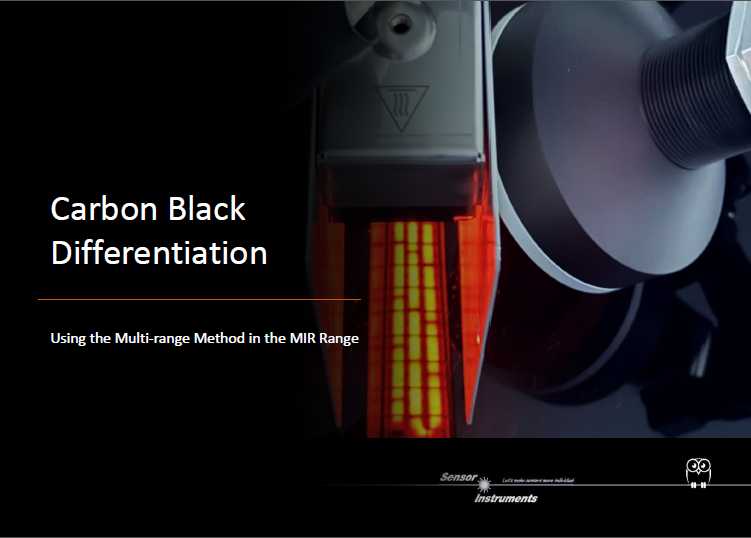 Carbon Black Differentiation Using the Multi-range Method in the MIR Range |
20.06.2024
| ¿Cómo puede determinarse realmente el espesor de una capa de pintura entre dos láminas de PET?
Para ello, se analizan cuatro pares de láminas de PET con capas de pintura de distinto espesor entre las dos láminas de PET (10 µm, 20 µm, 50 µm y 80 µm) mediante el método de luz transmitida MIR. En el lado del receptor, se disponía de dos rangos de longitud de onda con longitudes de onda centrales de 2,95 µm y 3,90 µm (SPECTRO-M-2-2.95/3.90). La distancia entre la lámina de PET y el transmisor MIR era de unos 20 mm. También se analizó la presencia de una capa de silicona sobre una lámina de plástico transparente utilizando este método de medición, con el resultado de que esta capa también podía detectarse muy bien. |
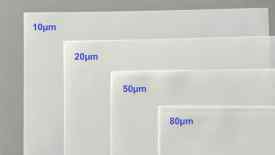 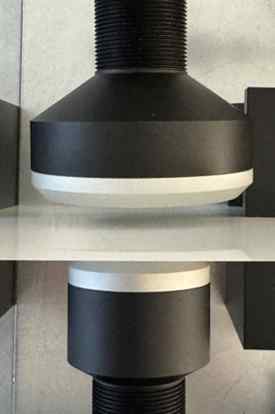 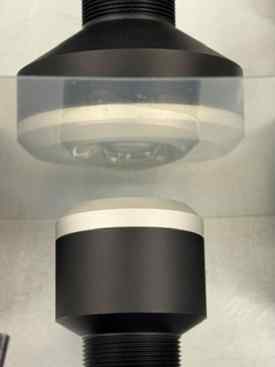 SPECTRO-M-15-T (fuente de luz) + SPECTRO-M-2-2.95/3.90 (receptor) |









